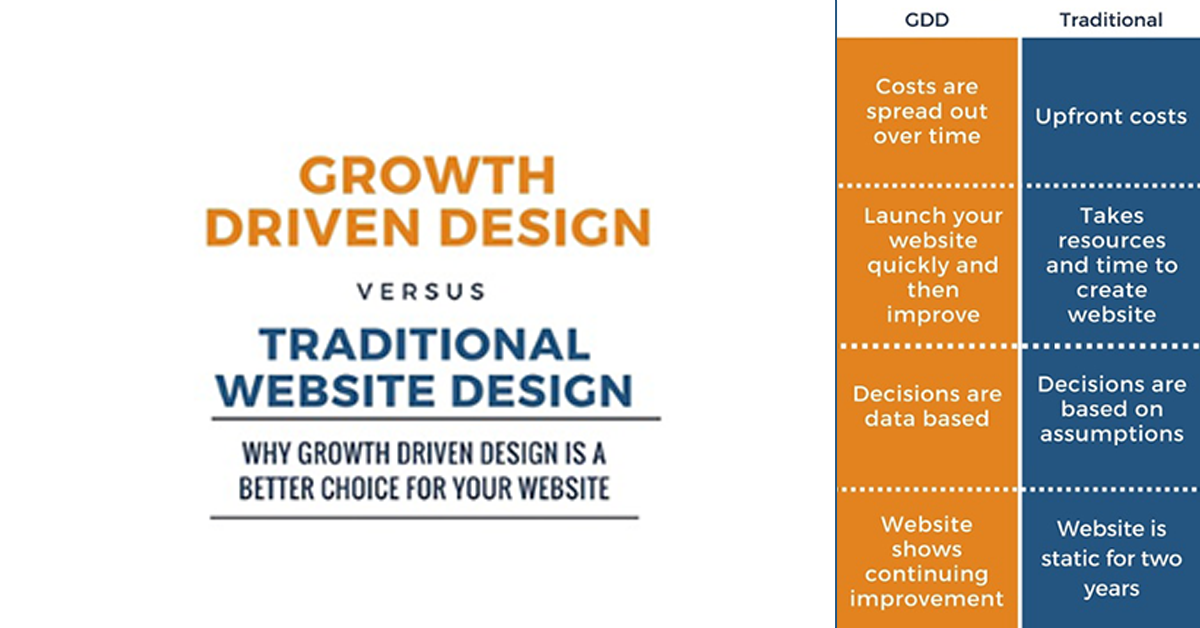There’s a new website model it’s called an “inbound website”. This website works in tandem with your existing inbound marketing strategies. The days of having a static, brochure-like website are over. These types of websites have basic information and pages such as a “contact us” or “about us” page. And solve some of your biggest pain points!
What are the biggest pain points associated with your website? Here are some of the most common we hear from jewelers around the country:
- Our website design becomes outdated and/or obsolete too quickly. And we don’t have the time or resources to keep it up to date every 1-2 years.
- We’re finding it difficult to measure and demonstrate ROI on our website while tracking relevant analytics.
- I want to improve my website but don’t have the skills to do it.
- My website isn’t set up to benefit from my marketing/lead generation efforts.

How Inbound Websites Work
Today, your website should be an online sales platform for your jewelry store and play a critical role in marketing to potential customers. If your website is not converting around the clock then you’re missing out on relevant leads and potential revenue.
With this in mind, inbound websites are the ideal website model to choose. Here’s how it works:
- Your inbound strategy and marketing funnel are integrated seamlessly with your website.
- You have a dedicated team (like GemFind) who keeps track of performance and makes consistent changes to adjust.
- You choose web hosting that can easily accommodate growth-driven design.
Because inbound websites are such a new concept, we’d like to break it down in detail so jewelers can understand its advantages. At the end of this post, you should have a firm grasp of how an inbound website can boost leads and conversions, exchange cost for value, and help improve ROI for your jewelry store.
Driving Conversions by Creating a 24/7 Marketing Funnel
In the past, jewelers have seen their website as simply a part of a marketing strategy. However, your website is a hub for all of your marketing and sales strategies. Which is why they should both be entwined as opposed to two separate entities.
How does this work? Think about how a marketing funnel functions with the inbound equation. You offer different assets and elements to attract and convert potential customers.
When you attract customers online, where is that traffic sent? Your website.
Where do you park your blog and content offers typically? Your website.
Where do you host forms to capture important information to effectively market to customers? Your website.
In other words, your inbound marketing strategy should be the driving force for your website. This should also determine your website’s sitemap and user pathways. You’ll set up your website to align with the inbound methodology.
Your inbound website funnel should contain:
- Search-engine-optimized pages and a blog to attract website visitors at the top of your funnel.
- Corresponding conversion elements, such as landing pages and calls-to-action, in order to help convert traffic into leads.
- Forms and other tools to help capture pertinent information and data about your site visitors; allowing you to effectively nurture leads and turn them into customers.
- Personalization tools — such as a ring builder or diamond search — to delight your customers and keep them engaged.
You shouldn’t solely focus on aesthetics when it comes time to start your inbound website redesign. You should also consider functionality as well. Your site’s entire structure should be in accordance with the inbound methodology.
Each page within your sitemap should serve a specific and meticulous purpose, and correspond to a specific step in the buyer’s journey. After all, a website visit is not random, but rather the first step on a user’s path to conversion. This is why each click should be logical and clearly defined; one page leads to the next, as you move traffic further down the journey.
This is how you create a site that eventually becomes a 24/7 marketing funnel, converting traffic while you sleep.
Generating Leads by Showing up Earlier in the Buying Cycle
According to HubSpot, customers complete more than half of the buyer’s journey before talking to a sales rep. This means that your customers are already doing their own research and deciding on a jeweler long before they call or visit a store.
The most successful jewelry stores are present in the first half of this journey. Their websites help educate potential customers throughout the sales cycle. Unfortunately, with a traditional website, you may not be up to this task. This old approach entails publishing basic information about your jewelry store and then waiting for website traffic to visit “Contact Us” and then inquire about one of your products or services.
This method puts a large gap between first visit to conversion, and your website’s user experience won’t be able to effectively nurture the gap in between. With an inbound website, however, you’re allowed to nurture leads gradually, from first touch to their final purchase (whether in-store or online).
The Buying Cycle
Inbound websites are paved with content that serve the buyer’s journey, which entails three stages including:

- Awareness – Person is aware they have a need or a problem, and they’re looking to identify and understand it.
- Consideration – Person becomes aware of potential solutions (including your products or services) and they actively look to understand these solutions better.
- Decision – Person is fully brought in to the solution, and is now deciding when, where, and how they can purchase.
By hosting content throughout the buyer’s journey on your website, you create the narrative of first how and then why your products or services are the best solutions for your potential customer’s problems.
This makes your business present for the critical moment when people are investigating and deciding on where and how to purchase. Without a content strategy such as this, your jewelry store will have a difficult time generating leads on the web and driving sales.
Seeing Steady Improvements in Performance and Design
If you’re having to redesign your website every few years to keep up with current trends, you have to consider what is occurring in between those redesigns. Chances are, if you’re website isn’t consistently improving, it’s missing out on sales and leads.
That’s why a growth-driven design is ideal and a fundamental part of the inbound website model. After all, you wouldn’t ignore your marketing efforts for an extended period of time, so why should you allow your website to gather dust?
Instead of yearly website redesigns, jewelers should invest in monthly changes to their website’s design and strategy from a trusted web design and digital marketing team. Here’s how it works:
- Your team will set or revise SMART goals to identify specific metrics of value to your jewelry store.
- They will analyze the data on your website performance and monitor a myriad of things such as content conversions, pop ups, button clicks, design organization, landing pages, and the purchase path as a whole.
- Then they’ll make frequent improvements based on the data gathered — ideally on a monthly basis. Repeat, starting with step 1!
Our marketing team at GemFind, and many other agencies, love this model as it means we are always aware of how a client’s website is performing instead of waiting for the next redesign to come about in order to make improvements and remediate problem areas.
With this line of thinking, you’re ensuring that you’re showing your website’s best face to potential customers.
Want to learn more about maintaining a jewelry website to keep it current? Download our FREE eBook!
Exchanging One-Time Cost for Long-Term Value (and Proving ROI)
When planning your website redesign, you may be worried about appearance. But what about how it functions? What about your website’s lead generation potential and conversion opportunities?
Many jewelers use periodic website redesigns to keep their site’s up to date, and focus primarily on aesthetics. Sadly, this can get costly; and for several reasons:
- You go into a redesign without much of predetermined strategy, causing you to inject money without any promise of ROI.
- Redesigns can, and often do, go over budget while taking longer than originally planned.
- In between a redesign, your website is not growing or improving, which means you investment only generates a return as long as that strategy is relevant.
With an inbound website model in place, you’ll constantly be monitoring data, so you’re aware of how your website is performing; allowing you to prove changes are making a true impact.
Qualifying Contacts with Smart Content and an Integrated Lifecycle Strategy
In a recent digital marketing-related study, it was revealed that nurtured leads make 47% larger purchases than non-nurtured leads. This means better educated leads make more confident investments because they simply have more trust in your solutions.
If your current lead nurturing process is manual and cumbersome (or simply non-existent) then you need to change your approach. Manually moving people in and out of different contact lists, emails, and processes, while attempting to figure out where they are in the buying process is the old way. The new and improved method is to have your inbound website create a complete lead nurturing process automatically.
With clear pathways for the buyer’s journey integrated into your website, you’ll have an idea of where potential customers fall in your sales cycle based on what pages they visit, which offers they’ve opted into, and which forms they have filled out. Instead of piecing together a range of actions to understand intent you’re setting up a complete customer lifecycle with your website’s content.
Getting Started with an Inbound Website Redesign
Now that you know what an inbound website model entails, it’s time to get started. Whether you’re starting fresh or want to redesign an existing website, jewelers should partner with a team that has the right expertise, such as GemFind.
We’ll start with a comprehensive analysis of your current website in order to create an inbound strategy that is tailored to your jewelry store. With us on your side, you’ll be on your way to creating an online hub that turns leads into customers. Contact GemFind today!


